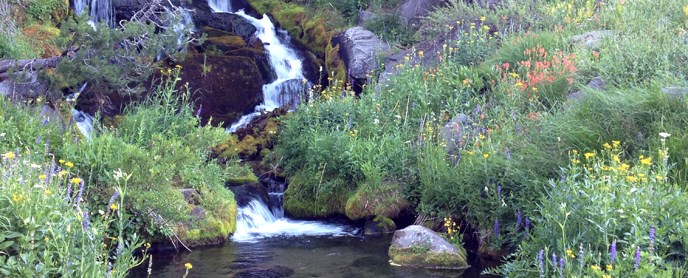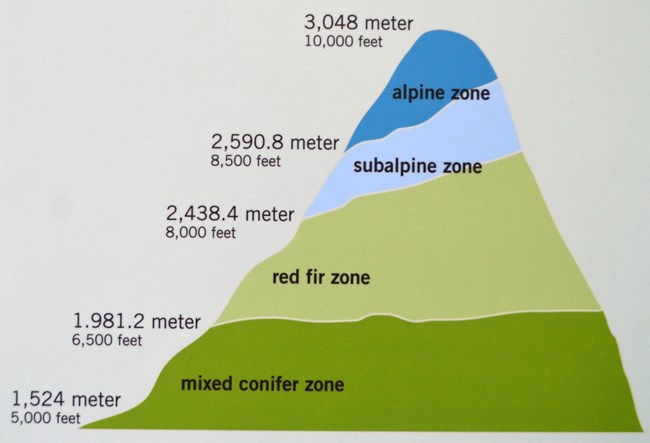
NPS Photo/ Jeremiah Reeves Jolley Lassen Volcanic is home to both native plants and invasive (non-native) species. Native are plants indigenous to the area in geologic time. This includes plants that have developed, occur naturally, or existed for many years in an area (trees, flowers, grasses, and other plants. Invasive plants are not native to the park and have a tendancy to spread, possibly causing damage to the existing ecosystem. Species ListsSelect a link to view a list of and information related to native and non-native plant species including: 
Plant Life ZonesMixed Conifer (below 6,500 feet)At elevations below 6,500 feet the dominant vegetation community is the mixed conifer forest. Ponderosa and Jeffrey pines, sugar pine, and white fir form the forest canopy for this rich community that also includes species of manzanita, gooseberry and ceanothus. Common wildflowers include iris, spotted coralroot, pyrola, violets, and lupine. Red Fir Forest (6,500-8,500 feet)Above the mixed conifer forest is the major community of the red fir forest. Between elevations of 6,500 and 8,000 feet, red fir, western white pine, mountain hemlock, and lodgepole pine dominate a community less diverse than the mixed-conifer forest. Common plants include satin lupine, woolly mule's-ears and pinemat manzanita. Subalpine (8,000 to 10,000 feet)Subalpine areas include the upper limit for the growth of standing trees. From 8,000 feet to treeline, plants are fewer in overall number with exposed patches of bare ground providing a harsh environment. Rock spirea, lupine, Indian paintbrush, and penstemon are a few of the rugged members of this community. Trees in this community include whitebark pine and mountain hemlock. *LichenLichen are a not a plant, but a symbiotic partnership between a fungus and alga. The dominant partner is the fungus, which gives the lichen the majority of its characteristics. The alga can be either green alga or blue-green alga, otherwise known as cynobaterica. Many lichens will have both types of algae. There are some 110 known species of lichen in the park. Learn more about lichen and how they help keep our air clean. Plants of ConcernSprinkled throughout Lassen Volcanic's elevation-defined Life Zones are several plants of concern. "Concern" is based on a variety of variables, including the level of threat a species faces, its abundance and ranking, and also the ecosystem services that it performs. The greatest threats to Lassen's flora include climate change, competition with invasive plants, and historical fire suppression. |
Last updated: November 4, 2020
